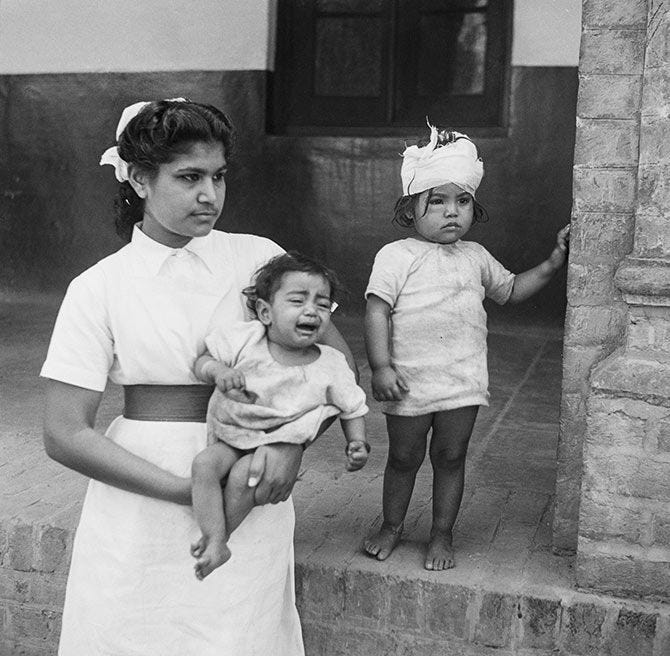Welcome to the Brown History Newsletter. If you’re enjoying this labour of love, please do consider becoming a paid subscriber. Your contribution would help pay the writers and illustrators and support this weekly publication. If you like to submit a writing piece, please send me a pitch by email at brownhistory1947@gmail.com. Check out our Shop and our Podcast. You can also follow us on Instagram and Twitter.
The Unwanted Children of Partition by Sayantani Upadhaya
“Trilok Singh was nine when he heard his father and his two uncles discussing the impending deaths of the ‘weak’ family members-the women and the children. His village has been confirmed to be a part of Pakistan and violence will probably reach them soon. It was decided by the male members that those who were vulnerable- to rape, conversion, or both, needed to be ‘saved’. They will be “martyred” - a term used by the family members of the women and children who were killed by their own men to save the honour of the religion and the community. Seventeen of the ‘weakest’ members of Singh’s family were killed by the men. However, Singh somehow was able to persuade his father and uncles to give him a chance to escape, and he escaped the violence, making his way to Amritsar”.
- The Other Side of Silence Voices from the Partition of India by Urvashi Butalia
Partition has always been viewed either from the prism of an overtly dull history chapter or through over-sensationalized boundary politics. The generations after Partition have never really tried to develop or sustain any memorandum commemorating the victims of the tragedy. However, in recent years, there has been some awakening regarding the documentation of memories from the time of Partition, but even so, the official historiography of Partition has almost always been elusive, especially when it came to the children who were lost, abandoned, or orphaned during Partition. Recovering memories is a difficult task, and relying upon them as a tool of history is too much to do without ‘facts’. But then, do the memories hold no importance?
During Partition, thousands of women were abducted, sexually violated, and many were forcibly married to their abductors. On 6th December 1947, just four months after Independence, India and Pakistan signed an inter-dominion agreement which allowed both nations to rigorously search for the abducted women and restore them to the state they “originally belonged to”. This treaty led to the procurement of The Abducted Persons (Recovery and Restoration Act) of 1949, which laid down in the Indian Parliament a broad description of who exactly is considered an “abducted person”; any female of any age and a male under the age of sixteen, who went missing on or after the first of March 1947, and found to be living with a person of a different community than theirs, will be considered abducted by the respective state. But when it came to child victims of Partition - children born of rape - were the governments akin in ‘getting’ them back as much as they were for the abducted women? The somewhat transpicuous answer to this cryptic question is a hard No. And to understand why these newly created states did not fight over these children as they did for the women, one needs to delve deeper into the psyche of the two states, who acted as masculine caricatures when it dealt with the women as well as the children. Partition was done on the basis of religion, and despite their mothers being victims of abduction, these children of interfaith parents posed an averted threat to both states, undoing the viability and primacy of the basic religious principles of Partition. And more so for the women belonging to the Hindu/Sikh community where the children born from a Muslim father cannot be ‘purified’- a ritualistic term in the religious Hindu code of conduct and thus remaining a recalcitrant for the endogamous community.




